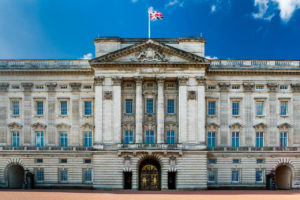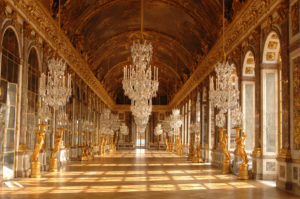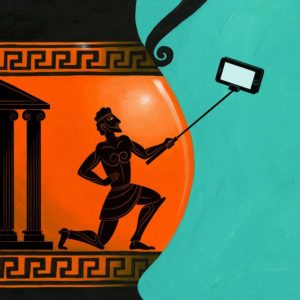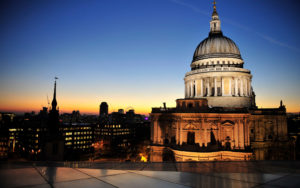The catwalk has always been a place for dazzling audiences as well as selling clothes

The 2007 Fendi Fall Collection show at the Great Wall of China. PHOTO: GETTY IMAGES
As devotees know, the fashion calendar is divided between the September fashion shows, which display the designers’ upcoming spring collections, and the February shows, which preview the fall. New York Fashion Week, which wraps up this weekend, is the world’s oldest; it started in 1943, when it was called “press week,” and always goes first, followed by London, Milan, and Paris.
Although fashion week is an American invention, the twice-yearly fashion show can be traced back to the court of Louis XIV of France in the 17th century. The king insisted on a seasonal dress code at court as a way to boost the French textile industry: velvet and satin in the winter, silks in the summer. The French were also responsible for the rise of the dress designer: Charles Frederick Worth opened the first fashion house in Paris in 1858. Worth designed unique dresses for individual clients, but he made his fortune with seasonal dress collections, which he licensed to the new department stores that were springing up in the world’s big cities.
Worth’s other innovation was the use of live models instead of mannequins. By the late 1800s this had evolved into the “fashion parade,” a precursor to today’s catwalk, which took place at invitation-only luncheons and tea parties. In 1903, the Ehrich brothers transported the fashion parade idea to their department store in New York. The big difference was that the dresses on show could be bought and worn the same day. The idea caught on, and all the major department stores began holding fashion shows.
The French couture houses studiously ignored the consumer-friendly approach pioneered by American retailers. After World War II, however, they had to tout for business like anyone else. The first Paris fashion week took place in 1947. But unlike New York’s, which catered to journalists and wholesale buyers only, the emphasis of the Paris fashion shows was still on haute couture.
The two different types of fashion show—the selling kind, organized by department stores for the public, and the preview kind, held by designers for fashion insiders—coexisted until the 1960s. Suddenly, haute couture was out and buying off the rack was in. The retail fashion show became obsolete as the design houses turned to ready-to-wear collections and accessories such as handbags and perfume.
Untethered from its couture roots, the designer fashion show morphed into performance art—the more shocking the better. The late designer Alexander McQueen provocatively titled his 1995 Fall show “Highland Rape” and sent out models in bloodied and torn clothes. The laurels for the most insanely extravagant runway show still belong to Karl Lagerfeld, who staged his 2007 Fendi Fall Collection on the Great Wall of China at a cost of $10 million.
But today there’s trouble on the catwalk. Poor attendance has led to New York’s September Fashion Week shrinking to a mere five days. Critics have started to argue that the idea of seasonal collections makes little sense in today’s global economy, while the convenience of e-commerce has made customers unwilling to wait a week for a dress, let alone six months. Designers are putting on expensive fashion shows only to have their work copied and sold to the public at knockdown prices a few weeks later. The Ehrich brothers may have been right after all: don’t just tell, sell.







 “Top Gun” is back. The 1986 film about Navy fighter pilots is getting a sequel next year, with Tom Cruise reprising his role as Lt. Pete “Maverick” Mitchell, the sexy flyboy who can’t stay out of trouble. Judging by the trailer released by Paramount in July, the new movie, “Top Gun: Maverick,” will go straight to the heart of current debates about the future of aerial combat. An unseen voice tells Mr. Cruise, “Your kind is headed for extinction.”
“Top Gun” is back. The 1986 film about Navy fighter pilots is getting a sequel next year, with Tom Cruise reprising his role as Lt. Pete “Maverick” Mitchell, the sexy flyboy who can’t stay out of trouble. Judging by the trailer released by Paramount in July, the new movie, “Top Gun: Maverick,” will go straight to the heart of current debates about the future of aerial combat. An unseen voice tells Mr. Cruise, “Your kind is headed for extinction.”
 Western Europe had nothing comparable to Weiyang until King Louis XIV built the Palace of Versailles in 1682. With its unparalleled opulence—particularly the glittering Hall of Mirrors—and spectacular gardens, Versailles was a cult of personality masquerading as architecture. Louis, the self-styled Sun King at the center of this artificial universe, created a living stage where seeing and being seen was the highest form of social currency.
Western Europe had nothing comparable to Weiyang until King Louis XIV built the Palace of Versailles in 1682. With its unparalleled opulence—particularly the glittering Hall of Mirrors—and spectacular gardens, Versailles was a cult of personality masquerading as architecture. Louis, the self-styled Sun King at the center of this artificial universe, created a living stage where seeing and being seen was the highest form of social currency.


